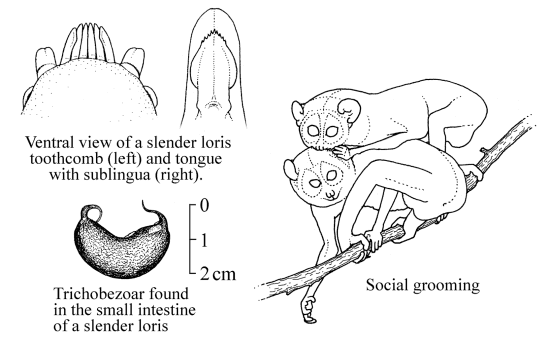

Lorises
have
specialized lower incisors and canines forming a toothcomb for
grooming
of the fur (both self- and social grooming occurs). Hairs are
removed from
the toothcomb with the help of the sublingua, a passively moved
structure
under the tongue, and are swallowed. Faeces usually contain
hair. In rare
cases, formation of trichobezoars has occurred. With increasing
size, such
bezoars may close the intestinal tract and become fatal. Two
lorises at
Ruhr-University who died of such a bezoar showed no apparent
behavioural
changes with the exception of slightly reduced food consumption,
occasional
short coughing and subsequent chewing in one animal.
Privacy policy / Datenschutz
|
Loris
and related species: health
|
Last
amendment: 5 May 2000
|